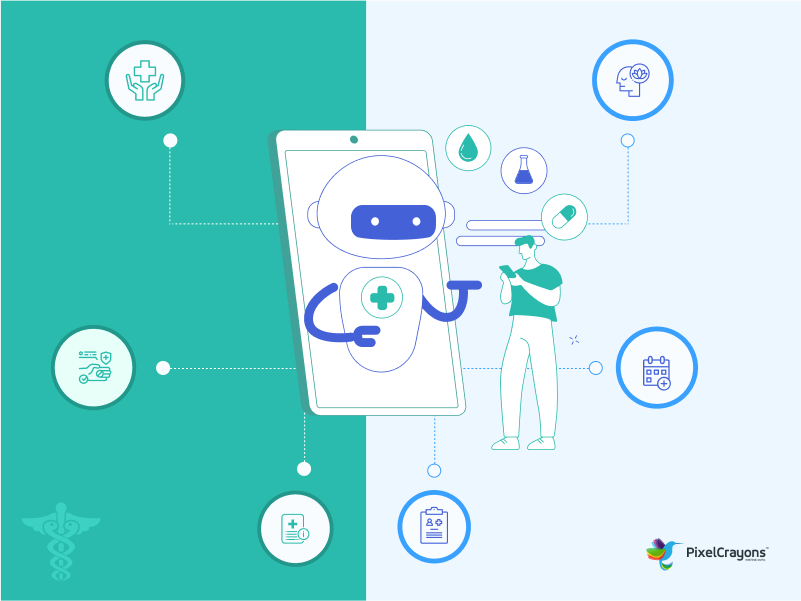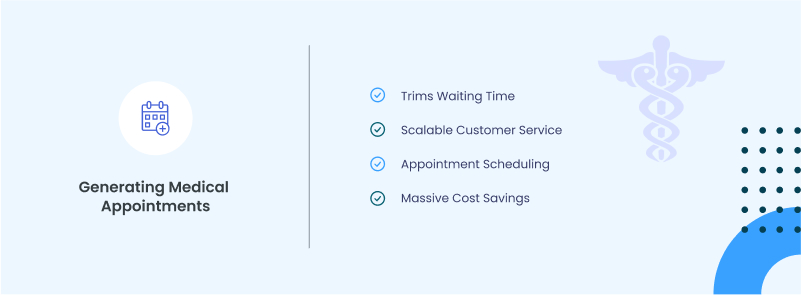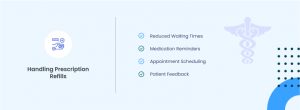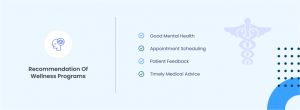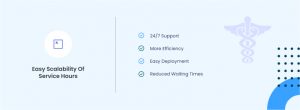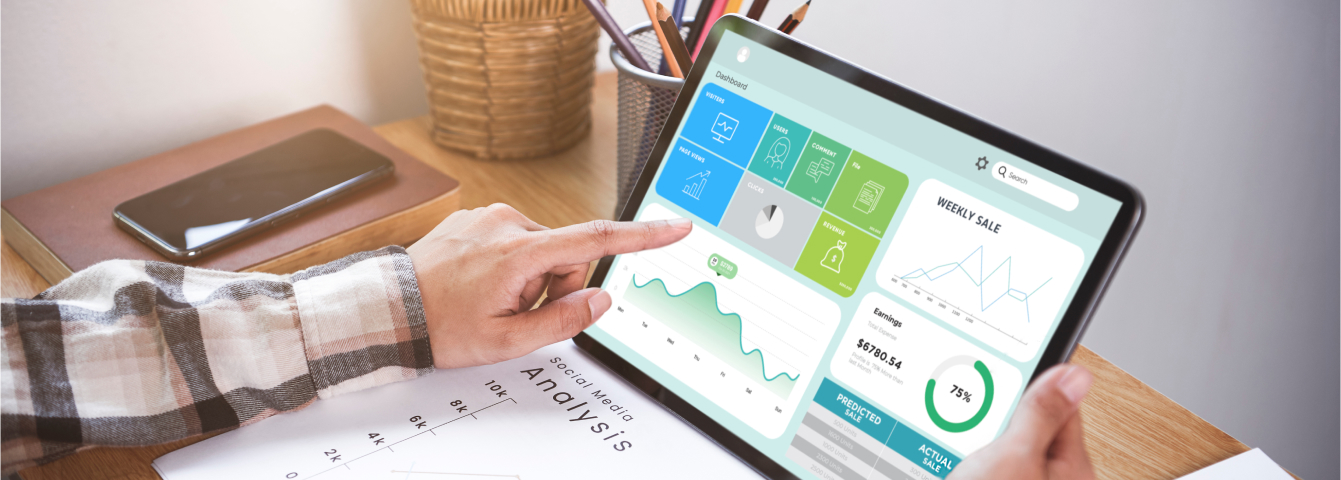Chatbots are all the rage, so it’s no surprise that healthcare chatbots are gaining traction and attracting interest from entrepreneurs, venture capitalists, and patient advocates alike. Notably, as per a survey conducted by Statista, an average of 42.75% of Clinicians believe that patients will use chatbots for treatment on a wide scale in the future.
The study involved world-leading nations, including the U.S, France, Germany, etc. The infographic below offers insights into the conducted survey.
Overall, healthcare chatbots are being deployed to assist patients and doctors alike. But what are the top 7 healthcare chatbot use cases you need to know? And do they truly act as a blessing to the healthcare systems?
Chatbots can help with everything from providing quick medical information to scheduling appointments. The answer is an obvious yes, and it does so in the following ways:
- Availing Medical Information for Diagnosis
- Generating Medical Appointments
- Aggregating Patient Data
- Managing Healthcare Insurance Queries
- Handling Prescription Refills
- Recommendation of Wellness Programs
- Easy Scalability of Service Hours
Let’s explore these healthcare chatbot use cases in detail.
Table of Contents
Healthcare Chatbot Use Cases
Number 1: Availing Medical Information for Diagnosis
One of the most common healthcare chatbot use cases is providing medical information. These AI-based algorithms train on vast healthcare data, including information about diseases, diagnoses, treatments, and potential markers.
This application of Chatbot gained wide-scale popularity under the wrath of the Covid-19 Pandemic. Worldwide, multiple countries developed chatbot-based applications that provide users information on their infection risk based on queries and GPS access.
It helped reduce patient mortality rates significantly across several regions where healthcare systems implemented it.
Examples:
- Aarogya Setu app predicts an individual’s risk of CORONAVirus infection based on answers from a predefined set of questions and contact tracing. It has gained 100 Million plus downloads on the Android store alone.
- ADA, a healthcare based web-app, extracts information from its digital medical library through identification, convergence, and knowledge extraction to help users analyze their health conditions.
Notable Benefits:
- It provides a user-friendly interface that reduces information overload for users and ensures that they get answers quickly.
- It helps in reducing patient mortality rates significantly.
- Developers can integrate this Chatbot with multiple platforms like Facebook, Whatsapp, etc.
- Such chatbots are capable of providing information in multiple languages.
- It helps in tracking patient data and provides valuable insights to doctors.
- Patients and doctors can use it for reference purposes and research purposes.
- It provides an ideal way for patients to receive quick answers while reducing education costs overall.
Number 2: Generating Medical Appointments
One of the most frequently used healthcare chatbot use cases is scheduling medical appointments. Here, a user (an individual or a doctor) can communicate with a chatbot and easily schedule an appointment at their preferred time without speaking to another human being.
The patient can ask for a morning appointment or say that they want it at 3:00 p.m. on Thursday and then set up other preferences, such as whether they prefer to see an OB-GYN over an endocrinologist. These requests get captured by using natural language processing to be understood by machines.
Examples:
- Practo: This is one of India’s most popular healthcare apps. It allows users to schedule appointments with doctors, book diagnostic tests, and even find nearby pharmacies. Users can search for doctors by name or specialty and make appointments online or via phone.
- Zocdoc: Zocdoc helps users find doctors in areas who accept insurance and have good reviews from other patients. The app also allows users to book appointments online or via phone.
Notable Benefits:
- It ensures faster & more convenient appointment scheduling. Rather than calling a clinic and speaking with an operator, customers can quickly request an appointment through a chatbot that understands natural language input and returns an appropriate response.
- It eliminates the need for a phone number or email address.
- More accurate appointment scheduling.
- Ensures better tracking of patient information and preferences.
- More accessible communication between customers & medical professionals, including doctors, nurses, and other medical staff.
- Lower overhead costs for clinics and hospitals can translate into lower healthcare costs for patients (by reducing appointment wait times).
- More consistent service delivery across clinics, regardless of location or time zone (since hospitals can use chatbots 24/7).
Number 3: Aggregating Patient Data
The healthcare industry is increasingly focused on using data analytics to improve the quality of care and reduce costs. It includes analyzing patient data from electronic health records (EHRs) and providing more reliable information about individual patients and populations.
Note: As per PRNewswire, the global big data analytics in the healthcare market size reached an overall $39.7 billion in 2022.
Chatbots in healthcare collect patient data effectively to ensure all information is in one place. The process involves asking questions about medical history, symptoms, family history, etc. Some doctors can access your data 24/7 via a chatbot, while other doctors will contact you through traditional means (phone calls or office visits).
For patients to use your Chatbot (for a virtual doctor), they must permit it to collect some personal data from the mobile device. It is helpful (and fun) for patients to compare answers with friends and family members to see what similarities exist among people with similar health concerns or genetic profiles.
Examples:
- HealthVault: This app lets patients store and share their medical records with providers. The mobile application enables patients to easily record and share their medical data with other healthcare providers, either via the internet or face-to-face.
- myPHR: Patients can manage their health records, while medical professionals can access them via this app. The app allows users to create their profiles, add their family members, and share information with healthcare providers at any time. It also enables users to save all of their health information in one place, including lab results, medications, allergies, and more.
Notable Benefits:
- Providing healthcare professionals with a 24/7 method of collecting patient data and accessing medical records (no more phone calls).
- Patients can compare answers with friends and family members to see similarities among people with similar health concerns or genetic profiles.
- Users can track their progress over time, such as weight loss, blood pressure, etc.
- In some cases, chatbots can provide more accurate information by asking questions faster and more accurately than humans.
Number 4: Managing Healthcare Insurance Queries
Insurance companies are notoriously complex. For example, if a patient holds an employer-provided plan with a high deductible and needs coverage for a surgery costing $3,000, the cost of healthcare is zero. However, the insurer could still bill the patient $2,000 to cover company fees.
Using chatbots in healthcare helps handle some of these problems by streamlining communications with insurers. A chatbot can make it easier for patients to get basic answers about their medical benefits, and they’ll be more likely to understand medical bills.
It also helps to reduce unnecessary claims disputes and improve patient care overall by lowering costs due to avoidable doctor visits.
Examples:
- Oscar Health: This app offers a simple way for members to manage their health insurance and access care providers. It also has a helpful dashboard that tracks your visits, medications, immunizations, labs, etc. Oscar helps users manage insurance policies and connect with healthcare providers.
- myCigna: The myCigna app will show the user where they are on their deductible and out-of-pocket maximum and any claims related to themselves or a family member within the last two years. It also allows users to access their medical information, schedule appointments, and refill prescriptions. It also has a wellness tracker to log your mood, activity level, and eating habits.
Notable Benefits:
- Reduced expensive medical bills due to confusion over insurance coverage.
- Better patient care by avoiding unnecessary doctor visits.
- More time for doctors and nurses since patients won’t be coming in as often for questions that a chatbot can answer.
- Fewer claims disputes since it’s easier for patients to understand their plan and what they’re covered for.
- Improved customer service since chatbots is available 24/7.
- Reduced insurance costs due to fewer claims disputes and less time spent dealing with medical bills.
Number 5: Managing Prescription Refills
The healthcare chatbot provides a valuable service by handling non-emergency prescription refills. These requests don’t warrant a phone call, but they are inconvenient and time-consuming without technology.
Allowing patients to schedule or request prescription refills through a chat interface makes their lives easier. The patient can send in a refill request from anywhere and doesn’t have to worry about forgetting to call during business hours or being on hold for an extended period.
If a healthcare organization uses technology like electronic medical records (EMRs), adding a chatbot that allows patients to quickly and easily order prescriptions is an easy way to improve customer service and satisfaction while cutting administrative costs.
Example:
Medly Pharmacy Delivery App provides a faster and easier way to refill patient prescriptions. Patients can ask doctors to send pills to Medly, and the app informs users when they have a new drug available for delivery.
Notable benefits:
- Patients can request prescription refills from anywhere and at any time.
- Manages requests without having to contact customer service.
- Reduces time spent on prescription refills by automating a previously manual process.
- Improves customer satisfaction
- It saves money on customer service calls & administrative costs.
Number 6: Recommendation of Wellness Programs
Wellness programs, or corporate fitness initiatives, are gaining popularity across organizations in all business sectors. Studies show companies with wellness programs have fewer employee illnesses and are less likely to be hit with massive health care costs.
The use of chatbots for wellness program management is still in its infancy. However, a few businesses like MetLife & Cigna are already experimenting with virtual assistants. Overall, ensuring effective wellness programs via chatbots leads to a healthier & more productive workforce.
A study from Northwestern University found employees who were offered financial incentives for meeting fitness goals were more likely to meet those goals than those who weren’t provided incentives.
Examples:
- Health insurance provider Cigna uses chatbots to allow customers to update their wellness data via Facebook Messenger. It is convenient to avoid disrupting work productivity by having users connect with the call centers instead.
- Renowned insurance company MetLife is working on research that combines artificial intelligence and body language analysis. It facilitates the creation of a chatbot capable of analyzing video footage and detecting signs of depression.
Notable Benefits:
- Providing mental health assistance could be beneficial in rural areas where access to trained therapists is limited or nonexistent!
- An excellent way for healthcare providers, therapists, and social workers alike to access a wide range of resources regarding mental health, addiction treatment, medication management, etc., all from one app!
- It acts as a way for healthcare providers to keep track of patient information without putting themselves at risk for a HIPAA violation!
- An excellent way for healthcare providers to streamline their workflows as it ensures reducing redundant tasks and paperwork!
Number 7: Easy Scalability of Service Hours
This solution is designed with growth in mind. The technology can easily be scaled up or down based on demand by turning off or enabling chatbots. This flexibility makes it easier for hospitals and clinics to accommodate seasonal fluctuations in patient volume and unexpected surges due to natural disasters, disease outbreaks, or public health emergencies.
In addition, nursing schools can use chatbots in place of humans to schedule appointments during non-school hours. For example, a school nurse could schedule doctor visits for sports injuries at 9 p.m., once offices have closed for the day but still provide access and care before school starts again in the morning.
The scalability of chatbots allows a single system to be used throughout a hospital or across an entire district.
Examples:
- ZocDoc allows users to search for doctors by specialty and see reviews from other patients who have seen them before scheduling an appointment.
- HealthTap is an app that allows users to ask real doctors questions about symptoms and treatments without waiting on hold or going through automated phone systems first.
Notable Benefits:
- Provides 24/7 access for patients and parents, no matter what day or night it is.
- It can be used in all states, regardless of location or language barriers (since chatbots can be programmed in multiple languages).
- Provides real-time updates on wait times and appointment statuses so that patients know when they can arrive at their appointment with a doctor or nurse practitioner without having to call and check first.
- Reduces staff workload by providing real-time updates on patient information. It is achieved without requiring nurses & doctors to manually update records every time a patient checks in for an appointment, prescription refill, etc.
Read Also: Top 10 Amazing Chatbot Benefits for Higher Business Growth in 2022
Wrapping Up
As per Grandview research, the chatbot industry will likely grow at a CAGR of 24.9% from 2021 to 2028. The growth will be propelled by factors such as:
- An increasing number of enterprises deploying chatbots,
- Chatbots for customer service,
- Rising Internet penetration, and
- Various initiatives by vendors and organizations.
Companies are now exploring healthcare chatbot use cases where they can harness AI capabilities to provide an empathetic ear during medical inquiries. It is much more than using today’s clunky yet traditional digital forms or telephones.
Enterprises worldwide believe that healthcare chatbot use cases are poised to create a paradigm shift in B2B & B2C interactions. As an example of how things might play out, various healthcare systems like Catholic Health in Philadelphia and Johns Hopkins Medicine in Baltimore have already deployed chatbots that take patients through check-in procedures.
If you are already trying to leverage Chatbot for your enterprise, feel free to connect with a leading chatbot development company in India for the project.
Frequently Asked Questions
Question: What are chatbots used for in healthcare?
Answer: Indeed, chatbots are still far from mainstream adoption in healthcare, but they have been gaining traction since their introduction in 2014. The initial use cases revolved around increasing patient engagement and efficiency.
Bots, in this case, chatbots, have 99.9% uptime. Therefore, a healthcare provider can dedicate a chatbot to answer a patient’s most common questions. Issues relating to insurance, such as questions about insurance coverage, filing claims, and proof of illness, can be solved via a chatbot.
Question: What is a common use case of chatbots?
Answer: Chatbots are most commonly used for customer service. The technology can help a business save money by reducing or eliminating human labor costs associated with providing customer support on a 24/7 basis. It also allows companies to scale their client services and provides brands with an opportunity to create more personalized experiences.
Question: What is an example of using an AI chatbot in health care?
Answer: With a healthcare chatbot, someone who might have contracted COVID-19 can communicate their symptoms to a healthcare chatbot rather than a doctor. This allows the doctor to focus on patients with more pressing needs, making it easier for doctors to address as many issues as possible. COVID-19 is just one example – chatbots can answer questions for various health-related queries.

